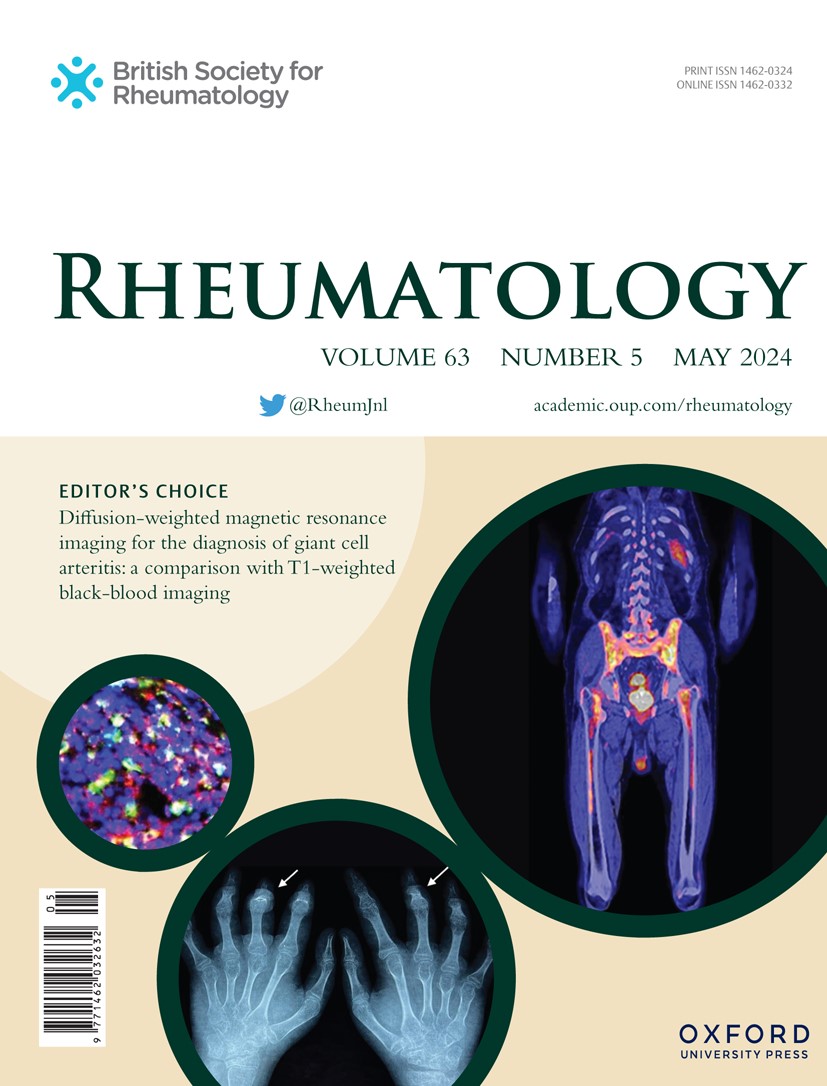绘制前进之路:解决anca相关血管炎的疾病负担、途径和解决方案
IF 4.4
2区 医学
Q1 RHEUMATOLOGY
引用次数: 0
摘要
抗中性粒细胞细胞质抗体(ANCA)相关性血管炎(AAV)是一种频繁复发的系统性自身免疫性疾病,其特征是中小血管的炎症和破坏,可能导致危及生命的器官损伤。在三种AAV亚型中,肉芽肿伴多血管炎(GPA)和显微多血管炎(MPA)最为常见。治疗的目的是通过诱导治疗(通常是利妥昔单抗[新的治疗标准]或环磷酰胺与糖皮质激素[GC]和阿瓦科潘)快速控制活动性疾病,然后采用不太积极的维持策略以降低复发风险。治疗GPA/MPA的国际和国家指南总体上是一致的,所有指南都强调需要通过快速GC逐渐减少和使用节省GC的avacopan治疗来减少与治疗相关的不良事件。指南将继续发展,因为正在进行的研究为替代(GC-sparing)治疗方案和基于rtx的最佳治疗方案提供了新的见解。本文章由计算机程序翻译,如有差异,请以英文原文为准。
Mapping a path forward: Addressing disease burden, pathways and solutions in ANCA-associated vasculitis
Antineutrophil cytoplasmic antibody (ANCA)-associated vasculitis (AAV) is a frequently relapsing systemic autoimmune disorder characterized by inflammation and destruction of small- to medium-sized blood vessels resulting in potentially life-threatening organ damage. Of the three AAV subtypes, granulomatosis with polyangiitis (GPA) and microscopic polyangiitis (MPA) are the most common. The aims of treatment are to rapidly control active disease with induction therapy (typically rituximab [the new standard-of-care] or cyclophosphamide alongside glucocorticoids [GC] and avacopan), followed by less aggressive maintenance strategies to reduce the risk of relapse. International and national guidelines for the treatment of GPA/MPA are generally aligned, with all guidelines highlighting a need to reduce treatment-related adverse events through rapid GC tapering and the use of GC-sparing avacopan treatment. Guidelines will continue to evolve as ongoing studies provide new insights into alternative (GC-sparing) treatment options and optimal RTX-based treatment regimens.
求助全文
通过发布文献求助,成功后即可免费获取论文全文。
去求助
来源期刊

Rheumatology
医学-风湿病学
CiteScore
9.40
自引率
7.30%
发文量
1091
审稿时长
2 months
期刊介绍:
Rheumatology strives to support research and discovery by publishing the highest quality original scientific papers with a focus on basic, clinical and translational research. The journal’s subject areas cover a wide range of paediatric and adult rheumatological conditions from an international perspective. It is an official journal of the British Society for Rheumatology, published by Oxford University Press.
Rheumatology publishes original articles, reviews, editorials, guidelines, concise reports, meta-analyses, original case reports, clinical vignettes, letters and matters arising from published material. The journal takes pride in serving the global rheumatology community, with a focus on high societal impact in the form of podcasts, videos and extended social media presence, and utilizing metrics such as Altmetric. Keep up to date by following the journal on Twitter @RheumJnl.
 求助内容:
求助内容: 应助结果提醒方式:
应助结果提醒方式:


